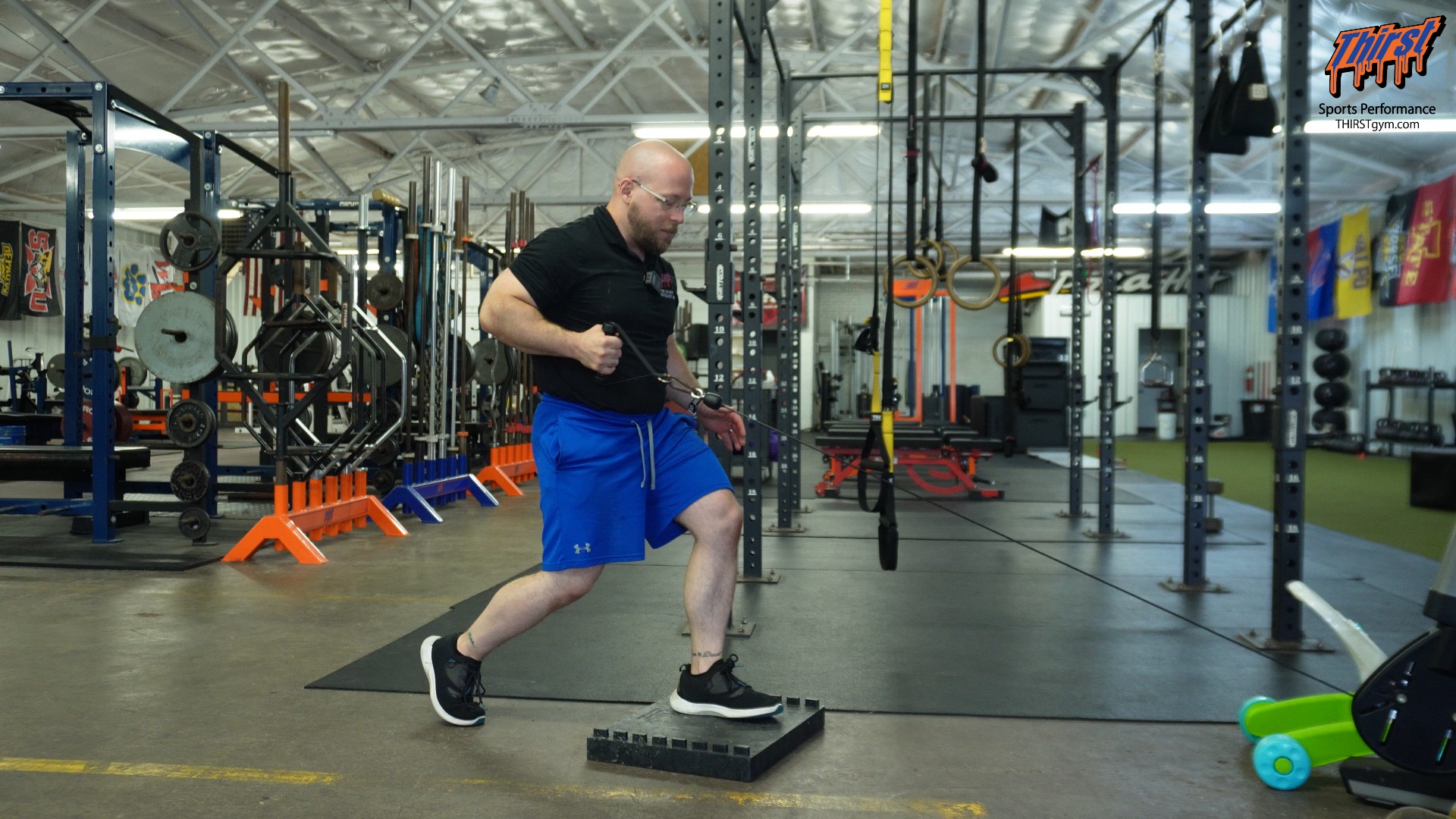Front Foot Elevated Split Stance Low Cable Row: The Ultimate Full-Body Back Builder
If you’re looking to elevate your back training while building functional strength and stability, the front foot elevated split stance low cable row should be at the top of your exercise list. This dynamic movement combines the muscle-building benefits of a traditional cable row with the stability and mobility challenges of a split stance position, creating a comprehensive exercise that delivers results for athletes and fitness enthusiasts alike.
Watch the video below on how to maximize this exercise.
What Makes This Exercise Special?
The front foot elevated split stance low cable row stands out from conventional rowing exercises because it forces your entire body to work as an integrated unit. Unlike seated cable rows that isolate your back muscles, this variation demands coordination, balance, and core stability while simultaneously strengthening your posterior chain. The elevated front foot position creates a unique biomechanical advantage that helps improve posture and movement quality.
Essential Equipment for Success
Before diving into the movement, you’ll need to gather the right equipment to perform this exercise safely and effectively:
Cable Machine Setup: Position your cable machine with the pulley set at the lowest possible setting. This low cable angle is crucial for optimal muscle activation and movement mechanics.
D-Handle Attachment: Use a standard single-handle attachment that allows for comfortable grip and natural wrist positioning throughout the rowing motion.
Elevation Platform: You’ll need a sturdy block, exercise mat stack, or weight plate to elevate your front foot. The elevation should be modest—just 2 to 3 inches is completely sufficient to achieve the desired effect.
Step-by-Step Exercise Execution
Mastering the front foot elevated split stance low cable row requires attention to detail and proper positioning. Here’s how to perform this exercise with perfect form:
Initial Setup: Place your front foot on the elevation platform, ensuring your entire foot makes contact with the surface. Your back leg should remain on the ground, creating a split stance position similar to the bottom of a lunge.
Body Positioning: Position yourself in the middle range of a lunge stance with your front knee slightly bent. Keep your torso tall and stacked, avoiding any forward lean or collapse through your midsection.
The Rowing Motion: Grip the cable handle and initiate the row by pulling toward your belly button. Focus on squeezing your shoulder blades together and driving your elbow back rather than simply pulling with your arm. Allow your arm to extend fully on the return phase while maintaining your stable split stance position.
Dynamic Integration: As you perform the rowing motion, use your front leg to push yourself up and slightly backward. This creates a dynamic element that engages your lower body while challenging your stability and coordination.
Switching Sides: After completing your set on one side, switch your leg and arm positions to work the opposite side. Maintain the same form cues and movement quality throughout both sides.
Key Benefits and Muscle Activation
This exercise delivers multiple benefits that make it valuable for various training goals and populations:
Enhanced Postural Control: The front foot elevated position naturally encourages better posture by shifting your center of mass slightly backward. This helps counteract the forward head posture and rounded shoulders common in today’s desk-bound society.
Improved Hip Mobility: For individuals with limited hip mobility, this exercise provides a more accessible way to work in a split stance position without requiring deep hip flexion. The elevated front foot reduces the mobility demands while still providing stability benefits.
Full-Body Integration: Unlike isolated rowing variations, this movement teaches your body to work as a coordinated unit, translating directly to improved athletic performance and functional movement patterns.
Single-Arm Strength Development: The unilateral nature of this exercise helps identify and correct strength imbalances between sides while building robust single-arm pulling strength.
Programming Recommendations
To maximize the benefits of the front foot elevated split stance low cable row, consider these programming guidelines:
Sets and Repetitions: Perform 2 to 4 sets of 8 to 15 repetitions per side. Most individuals will find the sweet spot in the 8 to 12 repetition range, but stronger individuals may benefit from higher repetitions if they max out the available weight on the cable machine.
Weight Selection: Choose a weight that allows you to maintain perfect form throughout the entire range of motion. The stability demands of this exercise mean you may need to use slightly less weight than you would for a seated cable row.
Exercise Placement: This movement works excellently as either a primary back exercise or as part of a circuit training routine. Its functional nature makes it particularly valuable for athletes looking to improve their movement quality while building strength.
Who Should Use This Exercise?
The front foot elevated split stance low cable row is particularly beneficial for athletes who need to develop positional strength and stability. It’s also an excellent choice for individuals with poor hip mobility, as the elevated front foot position reduces the flexibility demands while still providing the stability and strength benefits of split stance training.
Whether you’re looking to build a stronger back, improve your posture, or enhance your overall movement quality, this exercise delivers comprehensive benefits that extend far beyond simple muscle building. Give it a try in your next workout and experience the difference that functional, integrated training can make.








